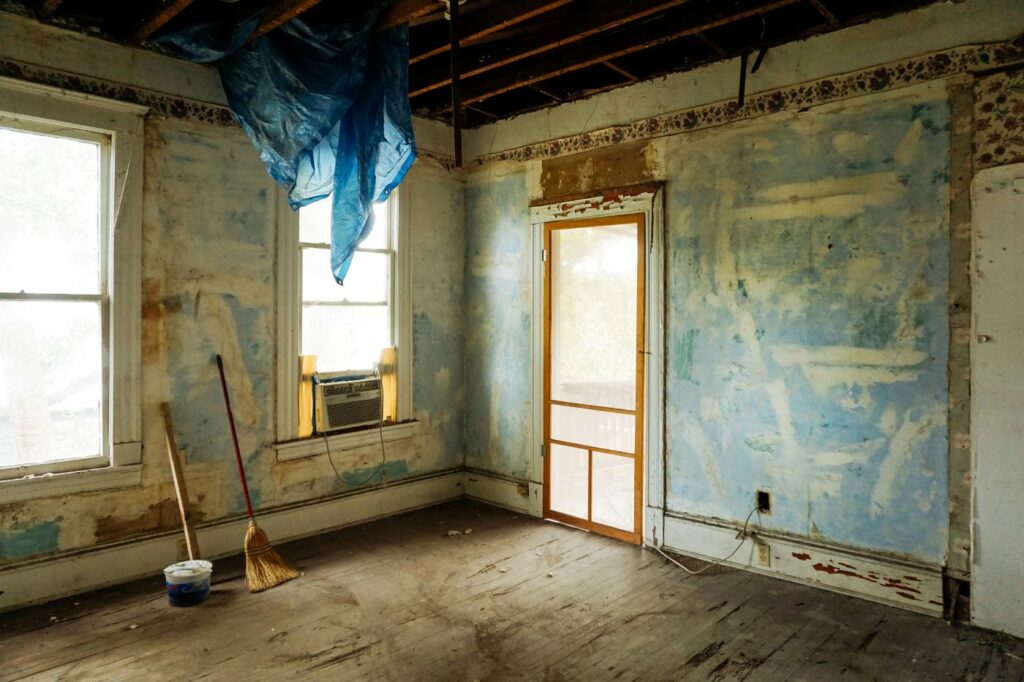The Ultimate Guide to Flipping for Beginners

House flipping is an incredible opportunity. With house flipping profits typically coming in around 10% of the resale price, it’s common to make $30,000 on the average single-family home and much more on luxury homes or those in hot markets. With HGTV popularizing house flipping for the general public through compelling TV storytelling, it’s no surprise this venture continues to grow in popularity.
Of course, TV and reality can be very different! If you’re a real estate investor new to house flipping, you’re wise to do your due diligence. It can be a lucrative venture, requiring an interesting blend of both mental and physical skills, but it’s not for everyone. Let’s discuss the basics so you can decide for yourself if house flipping is the right move for you.
Defining House Flipping
What is house flipping? House flipping is the act of purchasing a home, quickly making improvements that improve the value of the home, and then re-selling it at a profit. Time and money are both of the essence when it comes to house flipping. The longer it takes to complete renovations and sell the home, the longer you’re stuck paying down the mortgage, taxes, and insurance. However, the faster and more profitably you can sell the home, the more cash you have to invest in more properties.
Am I Ready for House Flipping?
Before you jump into your first house flip, here are some questions to consider:
- What are your goals? Think beyond your first flip. Are you planning on scaling up a business, pursuing projects in new markets, or using the profit for another venture altogether?
- How’s your risk tolerance? Every investment requires some risk. In the real estate world, house flipping is one of the riskier ventures, especially when compared to steadier buy-and-hold strategies.
- Am I financially ready? House flipping may require both a good amount of creditworthiness and cash to be successful upfront.
- What are my skills, and how do they translate to house flipping? Do you have a penchant for handiwork or a background in construction, or do you know people who do? Are you a real estate professional, and if not, how’s your knowledge of the local real estate market?
Tips for Finding the Right Property to Flip
Although accomplished flippers can take on severely damaged properties and still turn a profit, new flippers should look for properties requiring minimal work upfront. Here are a few best practices when choosing your first house to flip:
- Neighborhood value. Location’s always key in real estate, and it’s no different with house flipping. If you can score a house in a desirable neighborhood, you’re much more likely to have a successful flip.
- Avoid houses with structural issues. Foundations, plumbing, and room design are three elements that can be very expensive and difficult to repair when you’re starting out as a flipper.
- Opt for houses with surface or cosmetic damage. Peeling paint, outdated flooring, overgrown yards — these are all relatively inexpensive issues to fix that can have a powerful effect on a home’s value.
- Consider “broad appeal.” The broader the appeal of your house, the more likely it’ll sell. In general, most people like single-family detached homes, modern kitchens and bathrooms, a garage or off-street parking, washer and dryer hookups on the first floor, open layouts, exterior lighting, and a good amount of storage and closet space. Neutral colors and clean, open spaces also tend to appeal to most buyers.
House Flipping Budget Basics
How should you budget for your house flip? Do you need financing? Of course, budgeting depends on your unique financial situation, but experts agree that a good rule of thumb is to pay no more than 10% of the purchase price on repair and selling costs. There are unique loan programs that may enable you to purchase a house in need of repairs with less money down than a conventional loan, so talk to your loan officer about your options.
From Renovation to Listing: What to Expect
High-value renovations form the cornerstone of successful house flipping. Typically, it’s kitchens and bathrooms that boost your property’s overall value the most — but don’t underestimate the importance of curb appeal, too. The exterior of the house is the buyer’s first impression, and as the saying goes, “You never get a second chance to make a first impression.”
Simple enhancements like fresh paint, well-maintained landscaping, and new outdoor fixtures can make your property stand out, enticing potential buyers and adding significant value to your house-flip project.
The renovation process begins with detailed planning. Start by assessing the current state of the property and determining what improvements are necessary. Contact local government for legal and regulatory considerations, too: nothing holds up a renovation project like waiting for a permit or confirmation about zoning!
Once you’ve identified the required renovations, hire the right professionals. Selecting experienced contractors with good references is a pivotal decision in the house flipping process.
Overseeing the progress of the work is as important as the planning itself. Regular site visits, open communication, and timely decisions can ensure your project stays on track. Remember, delays can inflate costs, undermining the profitability of your house-flipping endeavor.
Although the renovations make up the bulk of the work, it’s unlikely that buyers will come banging down the door as soon as the last layer of paint dries. Even during the renovation process, it’s wise to put your marketing strategy into play so you can hit the ground running once it’s ready to sell.
Additional Resources
House flipping is full of complication and nuance, so the more you can educate yourself along your journey, the better! Here are some of the most popular resources for house flipping available today:
- Websites and blogs. Investopedia, Bankrate, and yes, even HGTV.com provide helpful how-to guides and inspiration.
- Books. Flipping Houses for Dummies, The Book on Flipping Houses, and The Flipping Blueprint are all reputed resources for beginners.
- Tools and technologies. Implement tech to the best of your ability to stay organized. A contact management tool like Contacts+ can help you organize potential buyer and investor contacts and market to them accordingly. You may also look into a basic project management tool like Monday.com, Trello, or Airtable to keep track of complicated steps and tasks along your journey.






